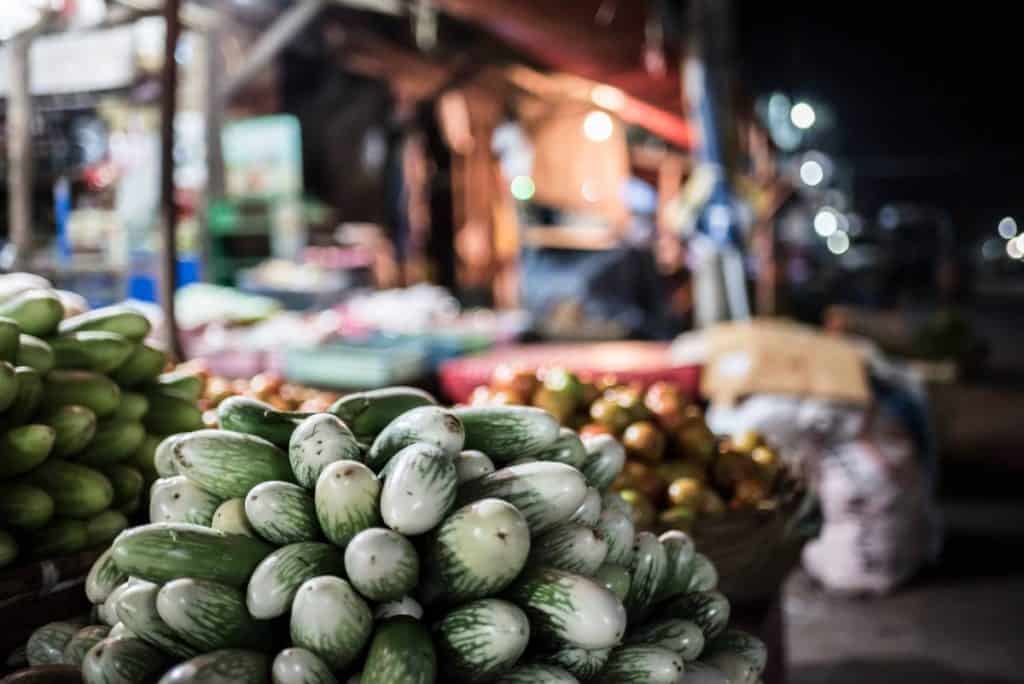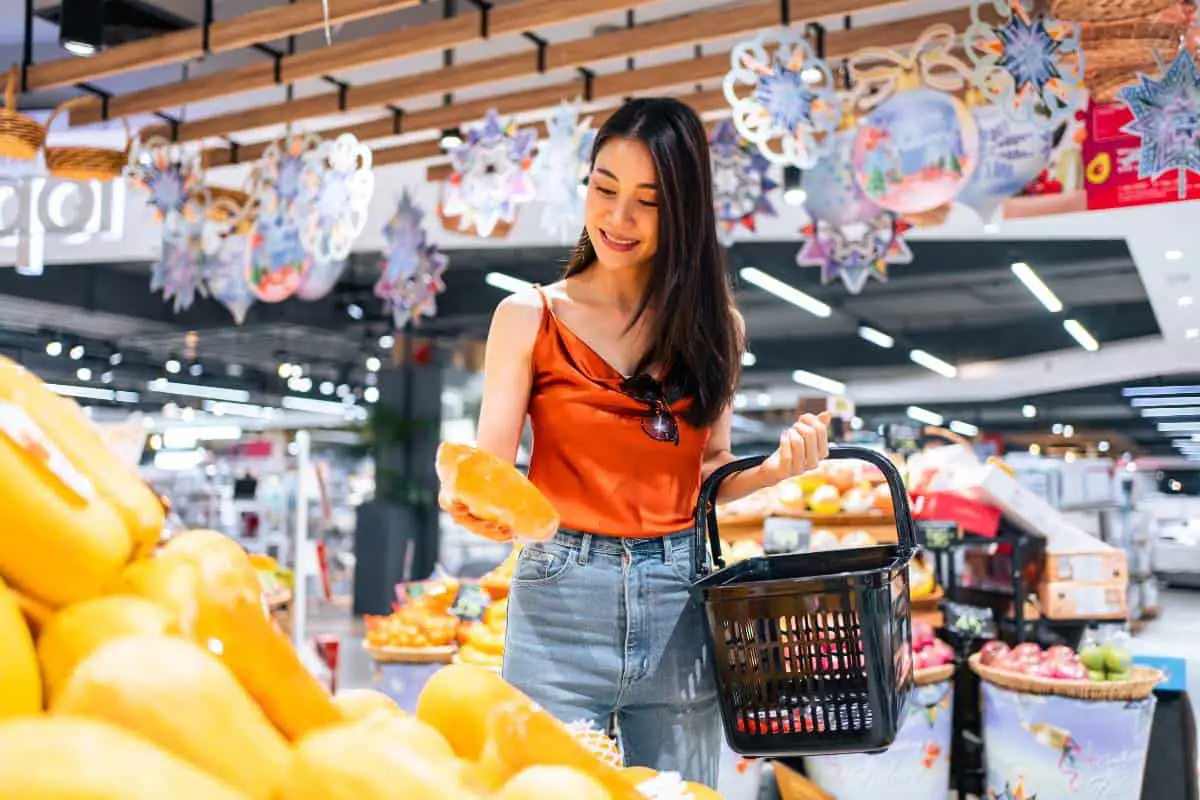Local Markets vs. Supermarkets in Thailand: An Expat’s Shopping Guide
When I first moved to Thailand after 35 years in the United States, one of the biggest adjustments to daily life was figuring out where and how to shop for groceries. The dichotomy between vibrant local markets vs. supermarkets in Thailand presented choices I never had to consider back home. After years of shopping at both, I’ve developed insights I wish someone had shared with me when I first arrived in the Land of Smiles.
Key Takeaways
- Local markets offer fresher produce at 30-50% lower prices than supermarkets while fostering community connections.
- Supermarkets provide air-conditioning, imported goods, and consistent quality ideal for specific Western items.
- A hybrid shopping approach maximizes savings and quality while adapting comfortably to Thai culture.
Table of Contents
Understanding Thailand’s Dual Shopping Ecosystem
Thailand offers a fascinating blend of traditional and modern shopping experiences that coexist side by side. Each morning, local markets (talad sot) burst into life before dawn, while air-conditioned supermarkets maintain consistent hours regardless of weather or holidays. This dual system reflects Thailand’s position as a country with deep cultural traditions that are simultaneously embracing modernization.
During my first few months in Bangkok, I primarily stuck to supermarkets like Tops, Big C, and Tesco Lotus (now Lotus’s). They felt familiar and safe—products were clearly labeled, prices were fixed, and the air conditioning provided welcome relief from the tropical heat. It wasn’t until a Thai friend invited me to her local fresh market that I began to understand what I was missing.
The sensory experience of that first morning at Or Tor Kor Market was overwhelming—the cacophony of vendors calling out their specials, the rainbow of exotic fruits I couldn’t name, the aroma of freshly ground spices, and the slight uncertainty of navigating it all without speaking much Thai. What began as an intimidating experience has become my preferred way to shop.
Price Comparisons: Where Your Baht Goes Further
After tracking my expenses carefully (old financial advisor habits die hard), I’ve found consistent patterns in pricing:
| Category | Local Markets | Supermarkets |
|---|---|---|
| Fresh produce | 30-50% cheaper | Higher prices but consistent quality |
| Meat and seafood | 20-40% less expensive, freshly butchered | Packaged, refrigerated, higher prices |
| Imported goods | Limited selection, higher prices | Better prices and wider selection |
| Household items | Basic selection, variable quality | More competitive pricing, greater variety |
| Ready-to-eat meals | Incredible value (30-60 baht), authentic | Food courts (60-120 baht), standardized |
One shopping trip stands out in my memory. I purchased a week’s worth of tropical fruits, vegetables, and fresh herbs at a local market in Chiang Mai for 420 baht (approximately $12 USD). The same items at a nearby supermarket would have cost over 700 baht. The savings add up significantly over time, especially for retirees on fixed incomes.
Quality and Freshness Differences
The quality difference between local markets and supermarkets varies by category:
| Where Local Markets Excel | Where Supermarkets Excel |
|---|---|
| Ultra-fresh produce, often harvested same day | Consistent selection regardless of season |
| Local varieties perfectly adapted to Thai cooking | Imported items and international brands |
| Seasonal specialties not found in supermarkets | Standardized quality control processes |
| Personalized service and vendor relationships | Longer shelf life for all products |
| Custom preparation (fish cleaned, meat cut to order) | Air-conditioned comfort while shopping |
I’ve learned to appreciate both. When my brother visited from Portland, I noticed he was skeptical about the food safety at local markets. By the end of his trip, he was confidently bargaining for mangosteen and dragonfruit at the Sunday Walking Street Market and declaring them the best he’d ever tasted.

Regional Differences in Thailand’s Shopping Options
If you’re considering where to settle in Thailand, shopping options vary significantly by region:
| Region | Shopping Characteristics |
|---|---|
| Bangkok and Major Cities | • Full spectrum from traditional markets to luxury supermarkets • Specialized markets (Chatuchak, Or Tor Kor for premium foods) • Greater availability of imported and specialized dietary products |
| Northern Thailand<br>(Chiang Mai, Chiang Rai) | • Strong market culture with unique local products Lower prices overall compared to Bangkok Fewer premium supermarket options but growing |
| Southern Thailand and Islands | • Higher prices overall, especially in tourist areas • Limited supermarket options on smaller islands • Fresh seafood markets with incredible selection |
After experiencing markets across Thailand, I find that Chiang Mai offers the best balance—excellent local markets with reasonable prices, plus enough supermarket options for those occasional Western cravings.
Navigating Language and Cultural Differences
One of the biggest hurdles for many expats is the language barrier at local markets. When I first arrived, my Thai vocabulary consisted of maybe five phrases, none particularly useful for haggling over mangoes. Here’s how I’ve learned to navigate this challenge:
Tips for Shopping at Local Markets
- Learn key shopping phrases: Even basic Thai goes a long way. “Tao rai?” (how much?), “lot noi dai mai?” (can you reduce a little?), and “korp kun krap/ka” (thank you) will earn you smiles and often better prices.
- Bring small bills: Most market vendors don’t appreciate 1,000 baht notes for a 50 baht purchase. I keep a separate “market wallet” with 20s, 50s, and 100s.
- Go early for best selection: The freshest items sell out quickly. I’ve found 7-8 AM is the sweet spot—vendors are set up but it’s not too crowded yet.
- Build relationships: After visiting the same vendors weekly, they now recognize me and often throw in extra items or give me “regular customer” prices without asking.
- Use the “point and smile” technique: When language fails, pointing and smiling works wonders. Most vendors are patient with foreigners making an effort.
Beyond Food: The Social Experience
What I didn’t anticipate was how shopping would become a social activity in Thailand. Unlike my rushed supermarket trips in America, market shopping here involves conversation, sampling, and community connection.
My regular fruit vendor asks about my family, remembers my preferences, and suggests new items in season. The grandmother who sells sticky rice and mango knows exactly how sweet I like my coconut milk. These personal connections transform routine shopping into meaningful social interactions.
Supermarkets, while convenient, lack this human element. I still remember feeling homesick during my first Christmas in Thailand until my local market vendor noticed my mood and gifted me a small bag of rambutans “to make me smile.” That small gesture of kindness from someone I saw weekly meant more than any convenience a supermarket could offer.
A Hybrid Approach: My Personal Strategy
After five years in Thailand, I’ve developed a hybrid shopping strategy that works well for my lifestyle:
| Type of Shopping | Where I Go | Frequency |
|---|---|---|
| Weekly fresh produce | Local morning market | Twice weekly |
| Meat and seafood | Local market for same-day cooking | As needed |
| International items | Villa Market or Tops | Monthly |
| Bulk purchases | Makro | Every 2-3 months |
| Specialty items | Specific vendors in Chatuchak (Bangkok) | Occasionally |
This approach gives me the best of both worlds—the freshness, price, and personal connections of markets combined with the convenience and selection of supermarkets when needed.
Environmental Considerations
One aspect that’s become increasingly important to me is the environmental impact of different shopping options. Local markets typically use significantly less packaging—vendors wrap items in banana leaves or simple plastic bags that get reused.
After noticing the mountain of plastic waste generated from a single supermarket trip, I now bring my own bags and containers to both markets and supermarkets. Many local vendors appreciate this effort, and some even offer small discounts for reducing packaging.
The carbon footprint difference is substantial too. Local market produce typically travels shorter distances from farm to market, while supermarket goods may be shipped across the country or internationally.
Digital Transformation of Thai Shopping
The COVID-19 pandemic accelerated some interesting developments in Thailand’s shopping landscape. Many local markets now offer delivery services through apps like Line, Grab, or Facebook Messenger. My favorite som tam vendor now sends photos of her fresh papaya each morning, and I can order with a simple message.
Meanwhile, supermarkets have developed sophisticated online shopping platforms with same-day delivery options. This digital transformation has blurred the lines between traditional and modern shopping experiences.
FAQs
What are the main differences between local markets and supermarkets in Thailand?
Local markets in Thailand offer a more authentic shopping experience with fresh local produce, often at affordable prices. Supermarkets, like Big C or Tops Market, provide a wide range of products, including Western food and convenience items, catering to both locals and tourists.
How do I find the best grocery shop while shopping in Thailand?
To find the best grocery shop, consider exploring local markets for fresh fruits and vegetables and trying out supermarkets like Foodland or Villa Market for a variety of grocery brands that cater to different needs.
Are there any notable supermarket chains in Thailand?
Yes, notable supermarket chains in Thailand include Big C, Tops Market, Foodland, and Villa Market. Each chain offers a unique shopping experience, combining local and international products.
What should I expect when grocery shopping in Thailand?
When grocery shopping in Thailand, expect a vibrant retail landscape with options ranging from local markets that sell fresh food to modern supermarkets that offer a wide range of products. You can also find convenience stores like 7-Eleven for quick purchases.
Can I find locally produced items at supermarkets in Thailand?
Yes, many supermarkets in Thailand, such as Tops Market and Fresh Mart, stock locally produced items, allowing you to support local communities while enjoying fresh Thai food.
Conclusion
For newcomers to Thailand, I recommend experiencing both shopping worlds. Start with supermarkets if you’re feeling overwhelmed, but challenge yourself to visit local markets with an open mind.
The rhythm of shopping in Thailand—early morning market visits for fresh ingredients, and occasional supermarket trips for imported comforts—has become one of my favorite aspects of life here. It connects me to local culture, saves money, and provides quality ingredients impossible to find back home.
Whether you choose markets, supermarkets, or a combination of both, the act of shopping for daily necessities offers a window into authentic Thai life that few tourist experiences can match. For me, that first cup of market coffee while selecting the day’s ingredients has become a cherished ritual that grounds me in my adopted home.
What began as a confusing challenge has become one of the joys of my expat life. As we say in Thailand, “gin khao reu yang?”—have you eaten yet? With Thailand’s amazing markets and food options, the answer is always a satisfied “yes.”
Have questions about living in Thailand? Need personalized recommendations for your specific situation? Our team is here to help! Contact us anytime.






